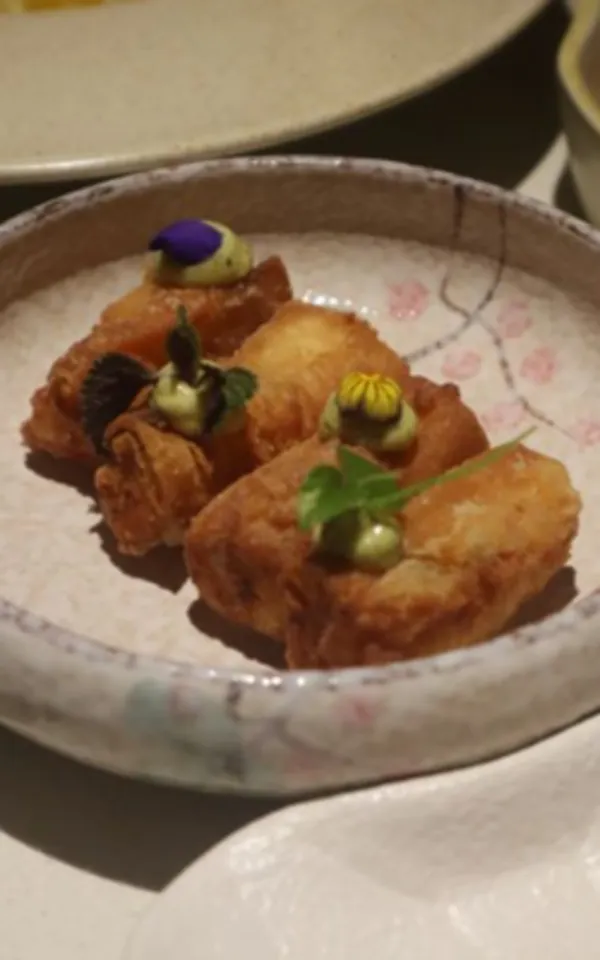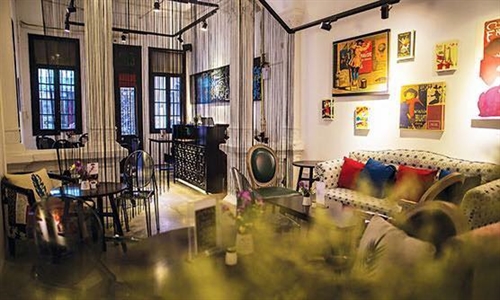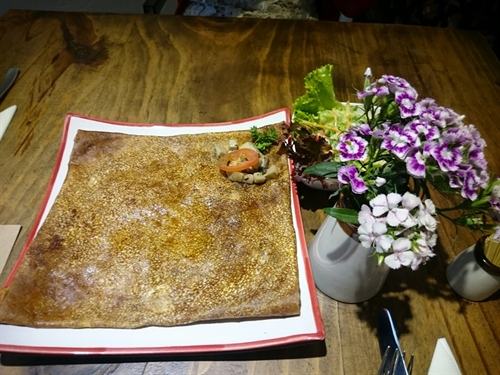 Restaurant Review
Restaurant Review

At Panam’ Creâperie on Tröông Haùn Sieâu St, diners can choose sweet or
savoury crepes brimming with French tradition.
 |
| Cozy: Comfortable corners of the tea house offer an authentic Bretagne feel to the restaurant. Photo courtesy of Panam’ |
by Mỹ Hà
Being a big fan of all thin pancakes, I was very happy to try out the new Panam’ Crêperie in Hà Nội.
There used to be very nice crêpes with butter sauce for dessert at the corner of Lý Thái Tổ, opposite the Legend Metropole. The restaurant is long gone and I can’t even remember its name. Since then, we have also forgotten about the thin soft crêpes cooked to order in the fine setting of Hà Nôi’s French Quarter.
Panam’ fits perfectly into Hà Nội’s food scene, which now boasts many bakeries of all styles. You can find pastries offered online amidst a growing baking community of self-taught or even internet-taught amateur bakers.
You can find shops opened by former employees of the French Legend Metropole, which has trained almost a generation of bakers in the city.
Five-star hotel pastry chefs also have their own selection, which are top notch.
But still, a delicious crêperie with authentic French tastes fits perfectly into the scene. We decided to give it a try on a nice day when we did not have to rush back to work or to a meeting.
Tucked in the corner of a small alley on Trương Hán Siêu St, the place looks like a contemporary art house as we walk through the narrow black and white gallery.
The restaurant is decorated finely like a tea house, and the menu offers crêpes with both meat and sweet toppings.
I’ve been to Bretagne and tried some crêpes there and loved it. Now we opt for quite a big crêpe with many fillings: the forestière has ham, egg, fresh tomatoes, mushrooms and emmental cheese (VNĐ150,000). It was a full meal on its own with everything we possibly needed.
As both of us are on diets, we were happy to share the dish with a small salad that accompanies it. The buckwheat crêpe was crispy, and the ham was delicious. We love mushrooms, so it was perfect.
By sharing the big crêpe, it gave us some room for the long-awaited dessert that followed.
Crêpe Suzette
According to Wikipedia, there are different suggestions about the origin of the name Suzette.
“One claim is that it was created from a mistake made by a 14-year-old assistant waiter Henri Charpentier in 1895 at the Maitre at Monte Carlo’s Café de Paris,” reads the Wikipedia entry. “He was preparing a dessert for the Prince of Wales, the future King Edward VII of the United Kingdom, whose guests included a beautiful French girl named Suzette. This story was told by Charpentier himself in Life à la Henri, his autobiography.”
Charpentier said, “It was quite by accident as I worked in front of a chafing dish that the cordials caught fire. I thought it was ruined,” according to Wikipedia.
He tasted it and thought, “It was the most delicious medley of sweet flavours I had ever tasted. That accident of the flame was precisely what was needed to bring all those various instruments into one harmony of taste.”
The future king supposedly asked the chef to name this dish after the young girl, Suzette.
“Thus was born and baptised this confection, one taste of which, I really believe, would reform a cannibal into a civilised gentleman,” according to the entry.
Different sources (like the Larousse Gastronomique,) however, doubt that Charpentier, rather than the head waiter, was serving the prince, because he would have been too young.
Another version comes from Elsie Lee’s interview with him in the 1950s.
“There, Charpentier explained at length that his complicated version began as the dish of pancakes with fruit sauce his foster mother made on very special occasions. The addition of liqueur was au courant among chefs in Paris at the time.”
A third suggestion claims that the dish is named in honour of French actress Suzanne Reichenberg (1853–1924), who worked professionally under the name Suzette. In 1897, Reichenberg appeared in the Comedie Francaise as a maid, during which she served crêpes on stage. Monsieur Joseph, owner of Restaurant Marivaux, provided the crêpes. He decided to flambé the thin pancakes to attract the audience’s attention and keep the food warm for the actors consuming them.
Lastly, in 1896, Oscar Tschirky, reads Wikipedia entry, published the recipe for Pancakes, Casino Style with everything in place except the final flambé. Escoffier described Crêpes Suzette in the English version of his Guide Culinaire in 1907 the same way, also without the final flambé.
At Panam’, we tried the Crêpe Suzette (VNĐ115), served with rum and flambée in front of us, creating a beautiful scene to end our luncheon.
My best friend and I felt delighted after the treat.
As we walked out of Panam’, she looked to the left and I looked to my right, and both uttered at the same time, “What’s next: phở or bún chả?” VNS
Box: Panam’ Crêperie
Tel: 04-6291-1026
Address: 26 Trương Hán Siêu
Comment: Crêperie, Dessert and Tea house in a fine setting
 |
| Wide selection: A wide variety of teas on offer. VNS Photo Mỹ Hà |
 |
| Savoury: Crêpe forestière at Panam’. VNS Photo Mỹ Hà |




